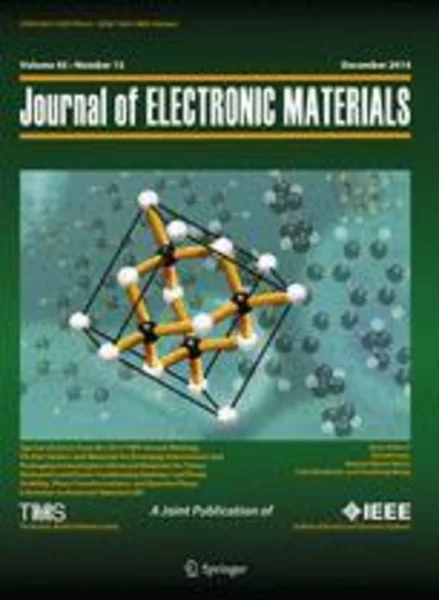-
characterizing corrosion effects of weak organic acids using a modified bono test
جزئیات بیشتر مقاله- تاریخ ارائه: 1392/07/24
- تاریخ انتشار در تی پی بین: 1392/07/24
- تعداد بازدید: 726
- تعداد پرسش و پاسخ ها: 0
- شماره تماس دبیرخانه رویداد: -
to meet environmental requirements and achieve benefits of cost-effective manufacturing, no-clean fluxes (ncfs) or low-solids fluxes have become popular in present electronic manufacturing processes. weak organic acids (woas) as the activation ingredients in ncfs play an important role, especially in the current lead-free and halogen-free soldering technology era. however, no standard or uniform method exists to characterize the corrosion effects of woas on actual metallic circuits of printed wiring boards (pwbs). hence, the development of an effective quantitative test method for evaluating the corrosion effects of woas on the pwb’s metallic circuits is imperative. in this paper, the modified bono test, which was developed to quantitatively examine the corrosion properties of flux residues, is used to characterize the corrosion effects of five woas (i.e., abietic acid, succinic acid, glutaric acid, adipic acid, and malic acid) on pwb metallic circuits. experiments were performed under three temperature/humidity conditions (85°c/85% rh, 60°c/93% rh, and 40°c/93% rh) using two woa solution concentrations. the different corrosion effects among the various woas were best reflected in the testing results at 40°c and 60°c. optical microscopy was used to observe the morphology of the corroded copper tracks, and scanning electron microscopy (sem) energy-dispersive x-ray (edx) characterization was performed to determine the dendrite composition.
مقالات جدیدترین رویدادها
-
استفاده از تحلیل اهمیت-عملکرد در ارائه الگوی مدیریت خلاقیت سازمانی و ارائه راهکار جهت بهبود
-
بررسی تاثیر ارزش وجوه نقد مازاد بر ساختار سرمایه شرکت های پذیرفته شده در بورس اوراق بهادار تهران
-
بررسی تأثیر سطح افشای ریسک بر قرارداد بدهی شرکت های پذیرفته شده در بورس اوراق بهادار تهران
-
بررسی تأثیر رتبه بندی اعتباری مبتنی بر مدل امتیاز بازار نوظهور بر نقد شوندگی سهام با تأکید بر خصوصی سازی شرکت ها
-
تأثیر آمیخته بازاریابی پوشاک ایرانی بر تصویر ذهنی مشتری پوشاک ایرانی (هاکوپیان)
-
تحلیل ارتعاش تیر غیر منشوری متکی بر شالوده کشسان با استفاده از روش dsc
-
مقایسه اثر تزریق الکل با توکسین بوتولینوم در فلج مغزی
-
بررسی میزان توجه به اصول خود مدیریتی درسازمان و تاثیر برخلاقیت و نوآوری کارکنان
-
نقش انسان محوری (اومانیسم) بر آثار معماری دوره رنسانس اروپا و دوره قاجار ایران
-
improved numerical integration procedure for application to seismic hybrid simulation
مقالات جدیدترین ژورنال ها
-
مدیریت و بررسی افسردگی دانش آموزان دختر مقطع متوسطه دوم در دروان کرونا در شهرستان دزفول
-
مدیریت و بررسی خرد سیاسی در اندیشه ی فردوسی در ادب ایران
-
واکاوی و مدیریت توصیفی قلمدان(جاکلیدی)ضریح در موزه آستان قدس رضوی
-
بررسی تاثیر خلاقیت، دانش و انگیزه کارکنان بر پیشنهادات نوآورانه کارکنان ( مورد مطالعه: هتل های 3 و 4 ستاره استان کرمان)
-
بررسی تاثیر کیفیت سیستم های اطلاعاتی بر تصمیم گیری موفق در شرکتهای تولیدی استان اصفهان (مورد مطالعه: مدیران شرکتهای تولیدی استان اصفهان)
-
مطالعه نقش و تأثیر داده های حسابداری و xbrl برارتقاء پیش بینی حرکات سود
-
تاثیر بازی درمانی شناختی بر عزت نفس و اضطراب مبتلا به اختلال یادگیری
-
بررسی چگونگی اثرگذاری مدیریت مالی الکترونیک بر بازار سرمایه
-
اثربخشی طرح واره درمانی بر تعامل زناشویی و رضایت جنسی مراجعین به مراکز مشاوره خانواده
-
ارائه یک روش جدید بازسازی متون در تصاویر نویزی مبتنی بر الگوریتم های -p نرم و بردار گرادیان




سوال خود را در مورد این مقاله مطرح نمایید :